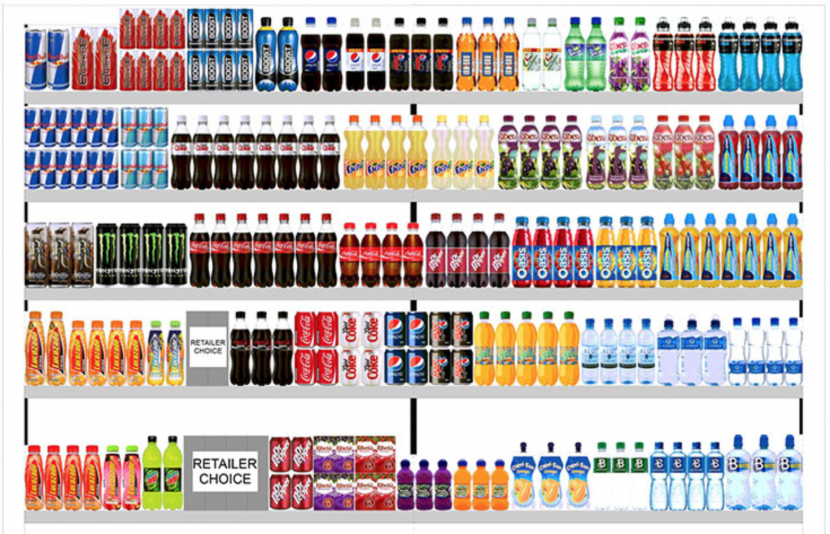

Out of stocks, on the other hand, cost retailers approximately $634 billion annually. It’s simple – having the right SKU in the right quantity, at the right location and in the right orientation can boost sales.

In fact, in a report by “Chain Store Age”, 63% of surveyed shoppers said that a store’s atmosphere can increase their interest in spending time at the store or buying more. Wouldn’t it be difficult to pass by with indifference on your way to the fruit and veg aisle even if it’s not on the original shopping list? Imagine a whole shelf of all varieties of chocolate spread – perfectly lined up and clearly labelled, and next to them scrumptious packs of marshmallows attached to racking clips. Presenting customers with a great choice of products, displayed in a tidy and enticing manner can engage them throughout their shopping experience as much as excellent customer service. Let’s imagine the Spreads aisle in-store and see how planogram compliance (or the lack thereof) affects customer experience, sales and operational visibility.Īppearances matter when it comes to shelves as one-third of shoppers decide what to buy when they see products and deals at the store shelf. So why should retailers strive to be compliant?

Retailers have achieved compliance with the planogram when all the right products are in the right place, quantity and at the right price. Firstly, what is planogram compliance?Ī planogram visually indicates the placement of retail products in a store, showing the layout of merchandise departments as well as the aisles and shelves where items can be found. Let’s look at how its impact extends beyond the appearance of shelves and why it should be a greater priority. While it is understandable why financial KPIs are a top priority for store operations executives, letting planogram compliance slip down the list can be detrimental for those very KPIs. Instead, retail operations leaders prioritise KPIs such as A recent study shows that only 11% of retailers see planogram or store layout compliance as a priority KPI when measuring store performance.


 0 kommentar(er)
0 kommentar(er)
